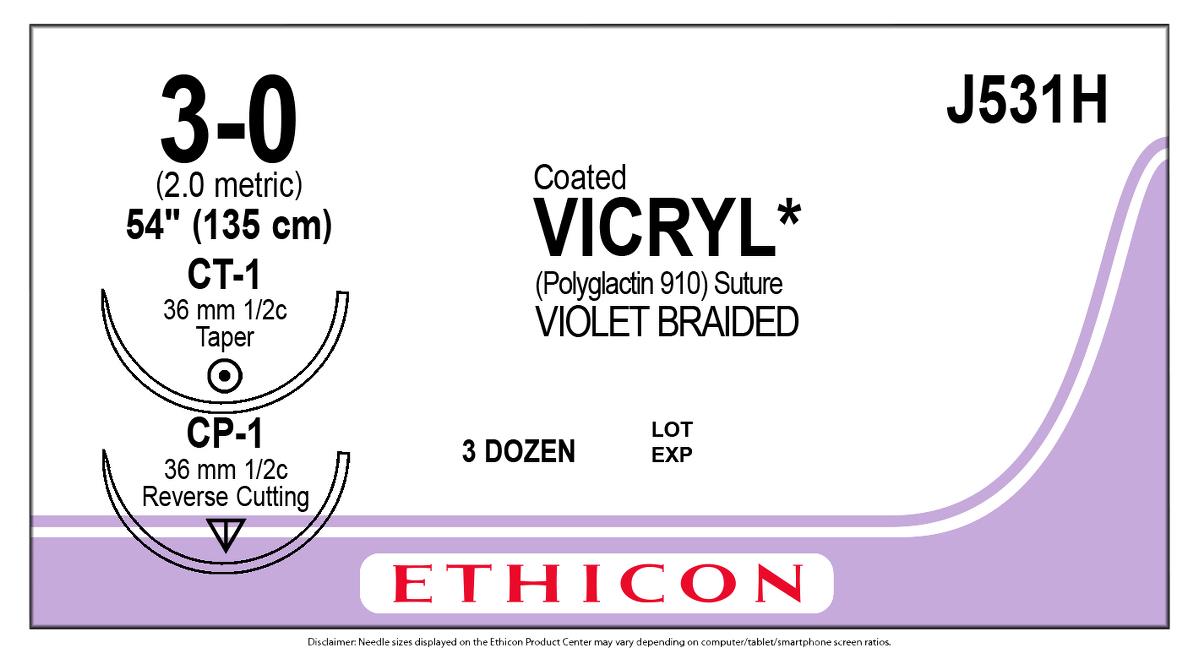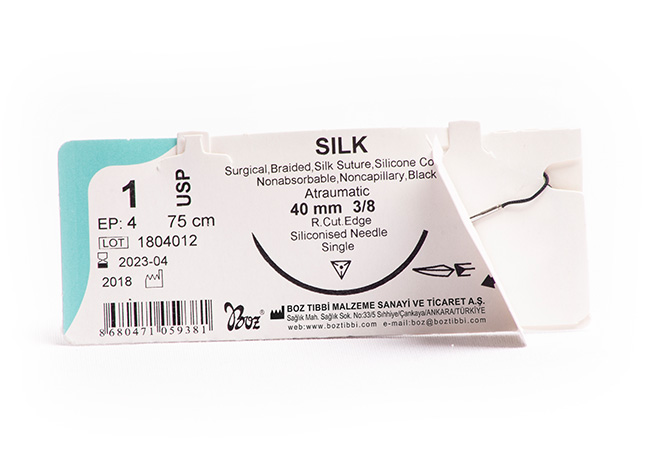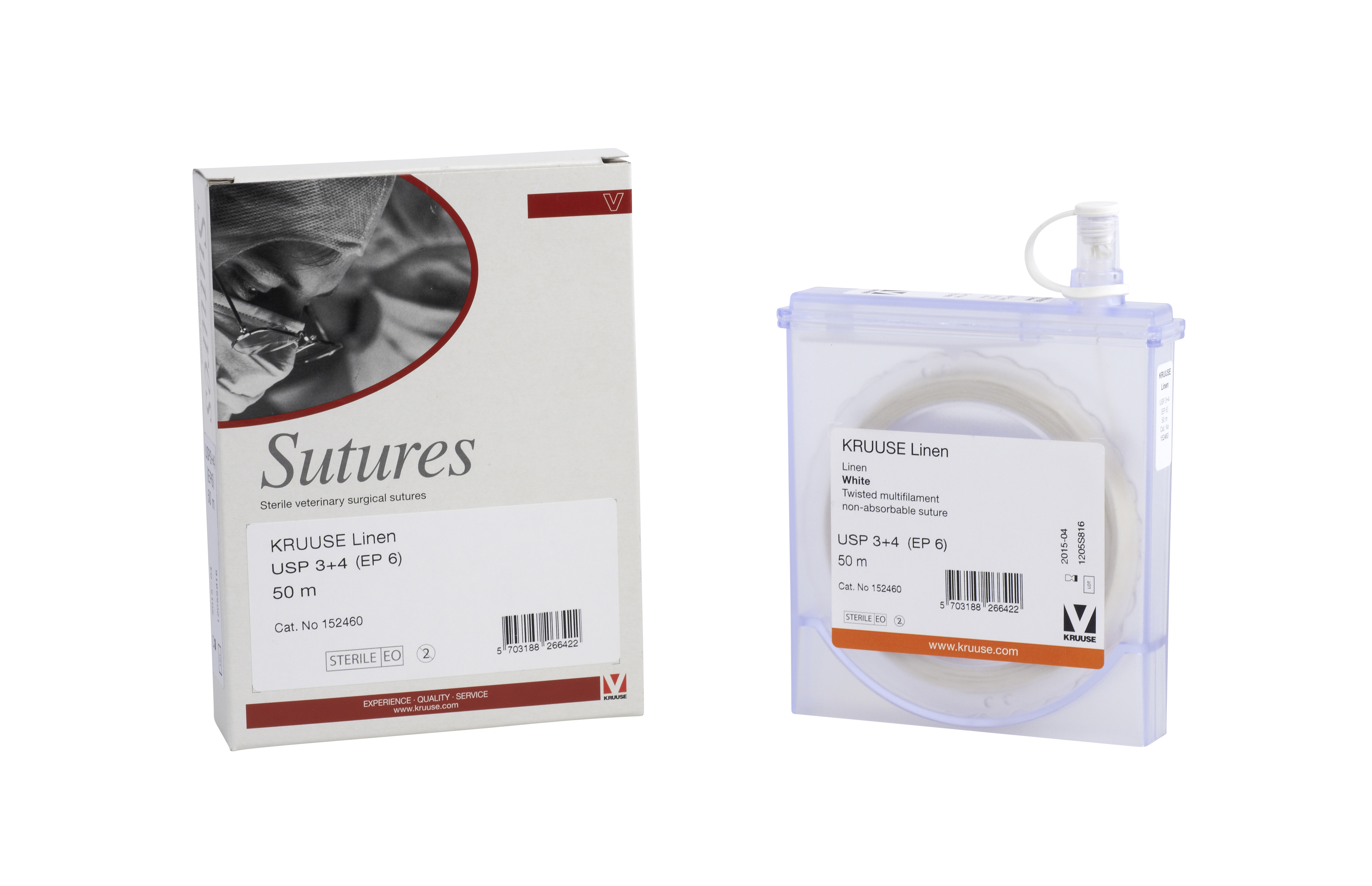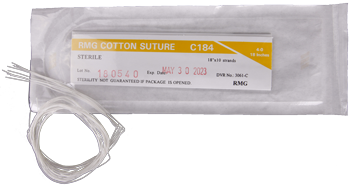Suture Material
Suture
Materials
Difference b/w Ligating/ligaturing and Suturing
§ Ligating/ligaturing= refers to tying a ductal structure such as blood vessel simply by means of a suture-thread.
§ Suturing = means sewing two structures together and this carried out by a needle thread with suture material.
Types of Suture Material:
Suture materials are divided into two
types.
A) Absorbable suture
I) Natural
.Plain catgut
.Chromic catgut
II) Synthetic
• Polyglycolic Acid (P.G.A)/dexon ,Vicryl.
A) Nonabsorbable
NATURAL:
• Cotton
• Linen
• Silk
SYNHETIC:
• Nylon
• Prolene
• Metallic Wire ( steel, silver )
01) Absorbable sutures
a) Cat-gut
● It is made from the sub-mucous layer of the small intestine of sheep, not of cat.
Catgut is of two types.
1) Plain catgut
2) Chromic catgut
1) Plain Cat- gut=It is in raw state, untreated by any chemicals.
● Each of the stand is the graded and separated into six sizes: from thinnest to thickest, 4/0, 3/0, 2/0, 0, and 1 and 2.
● It is normally absorbed in 3-5 days.
Uses: It is used as ligature for small vessels and also as a suture for a subcutaneous stitch under the skin.
2) Chromatized Cat-gut= which is and more slowly absorbed than plain type because it is chemically treated with chromium salt, so more resistant to digestion by body‘s enzymes. It has another advantage over plain catgut---it is less irritant to tissues and can be used in presence of infection.
● It absorbs in 10-40 days. It is used to suture peritoneum and muscle facia.
● The grading of cat-gut is made according to the thickness and strength from 0000(4/0) to4. The extra fine cat- guts of the size 5/0 and 6/0 are used for ophthalmic operations. The fine catgut is used for tying sub mucous blood vessels and fat. Thicker catgut is necessary for ligaturing larger vessels and muscles. The peritoneum is sutured with No: 0 unless there is tension when NO: 1 may be used.
Advantages:
● The great advantage is
that it is absorbed and therefore it can be used in presence of infection in
which Nonabsorbable sutures should not be used.
Disadvantages:
1) The tensile strength of
catgut diminishes rapidly so after 3-4 days it can no longer hold the tissues in
sufficient strength.
2) The catgut is swollen in the
tissue so there is tendency for the knots to slip.
3) It is irritant to the tissues so
there is more chance of infection.
4) If not properly sterilized, there is possibility of Tetanus developing.
5) It is expensive.
b) Kangaroo Tendon:-
● It is made from the tendon in the tail of kangaroo. It lasts in the tissues for about one month. The length of the strand is about 12”.
c) Polyglycolic acid (PGA)/ (Dexon): -
● This is a synthetic absorbable suture.it is green or white in color.
Its advantages are:
1) Great tensile strength---stronger than
catgut
2) It handles like a silk.
3) Very little tissue reactivity.
4) It absorbs in 12 weeks or
60-90 days.
5) It knots well.
d) Copolymer /Vicryl)/ Polyglactin 910 /Ethicon
●It is a smooth fibre, made in nine
sizes from 0.3 to 5.
● This is a synthetic soluble suture.
It is violet in color. Its tensile strength does not fall before 4-6 weeks.
● It’s full absorption takes about 3
months. So it is most ideal among the absorbable sutures.
● It is used in suturing all tissues, for gut anastomosis.
2) Non-absorbable sutures.
● These sutures are resistant to
digestion by to body’s enzymes. Non-absorbable sutures are not generally used
in infected wounds as they may cause sinus formation. They are used to give
permanent support to a wound, even after the natural healing process has
occurred.
A) Natural Non absorbable
01) Silk
● It is a natural, non-absorbable suture. It is produced from silkworm; the suture is white or black.
● The sizes available are 0.4 (8/0) and from 0.7 to 6 (6/0 to 4) or even stronger.
● It is used for skin closure.
2) Linen
● It is natural non-absorbable suture made from flax plant.it is white in color.● It is easy to handle and knots very
well.
● It produces minor tissue reaction.
● It gains strength on wetting.
USES:
● It is used for all purposes e.g.
ligaturing blood vessels, suturing the fascia, muscles, peritoneum, intestine
or nerve sheath and skin.
● Its advantage is that it is non-irritating so less possibility of infection, gives closer friction grip, is much cheaper and can easily be sterilized by boiling.
3) Cotton
● It is natural non-absorbable suture. Origin is from fibres of cotton plant.
● It is not as strong as silk.
● It gains strength on wetting.
Uses: It’s uses are same as of silk.
A) Synthetic Non absorbable:
1) Polyamide Monofilament/Nylon/ Ethilon
● This is a synthetic material, single strand of polyamide supplied in sizes ranging from 0.2 to 2 (10/0 t0 2).
● It can be safely used in presence of infection.it is black, green or blue.It is used for suturing abdominal muscles.it is also used on skin, from which it needs to be removed once the wound has healed.
2) Polypropylene/Prolene
● It is a synthetic, non-absorbable suture.
● It is blue in color. It is used for
general closure and vascular anastomosis, abdominal wall closure, herniorrhaphy,
used in cardiovascular operations.
● It’s tensile strength is very high
and not weakens at all before 24 months.
● It is none irritating to tissues.
3) Metallic Wire:
i)Surgical steel
● It is synthetic, non-absorbable suture
● It is made up of iron, nickel and cadmium alloy.
● It is used mainly in orthopedics and thoracic surgery.
● It is difficult to handle and kinking may occur.
ii) Silver metal clip
It is used in neurosurgery and chest
surgery for arresting hemorrhage from
small vessels.
Note: Now a days STAPLES and ADHESIVE STRIPS are used in suturing.










Comments
Post a Comment